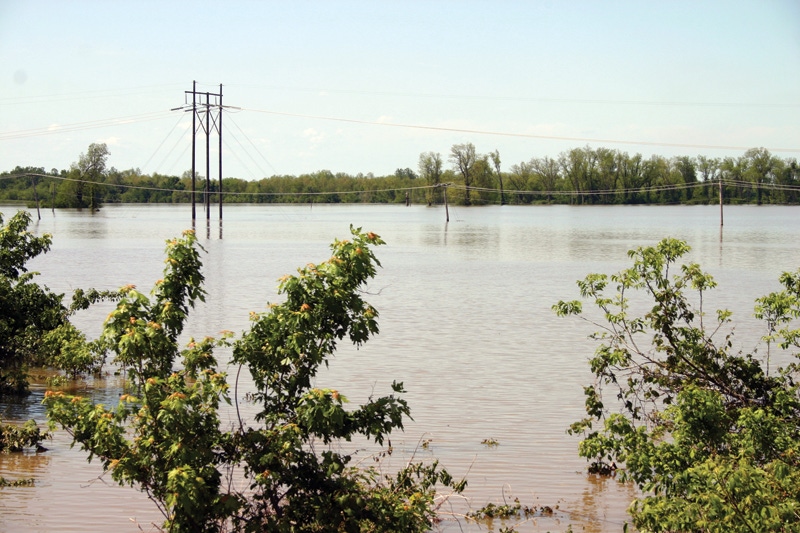
A swollen Mississippi River will gain some relief due to the Monday opening of Louisiana’s Bonnet Carre floodway. A second Louisiana floodway, Morganza, is to be opened sometime this week and will bring water levels even lower.
But reducing Mississippi River pressure comes with serious consequences. As happened in the southeast Missouri floodway, the opening of Bonnet Carre and Morganza means residences and farmland will go underwater. And, just as Missouri farmers found out, there are questions regarding whether crop insurance will pay out for those in the floodway.
On Tuesday morning, Delta Farm Press spoke with Louisiana Agriculture Commissioner Mike Strain about the floods, crop insurance worries, displaced residents, and when water is expected to recede. Among Strain’s comments:
Please bring us up-to-date.
“Bottom line: we’re opening the Bonnet Carre spillway. That began on Monday.
“We expect private confirmation today on the opening of the Morganza spillway and the entire system as to overall height and flooding stages.
“We do expect our all the major levees to hold. But there will be flooding within the Atchafalaya Basin as we divert river water into the Morganza and Lake Pontchartrain. This will also involve water coming in from Old River, the first control station.
“They started pulling the Bonnet Carre pins Monday. They will remove all the pins and open the spillway to full capacity.
“The initial opening of the Morganza will be to 50 percent capacity – around 300,000-plus cubic feet per second.”
On farmland that is, or will be, flooded…
“There is farmland in the spillways.
“We’re getting a direct assessment in the ‘Fore Bay,’ which is already underwater. It’s on the front side between the river and the spillway at Morganza.
“There is about 3,500 acres of farmland in the ‘Tail Bay.’ That’s the back section where there is 12,500 acres of farmland plus crawfish ponds.
“We’re also looking at heightened water throughout the entire Atchafalaya Basin system going north. We’re trying to get models of that now to know exactly how much will be flooded.
“The LSU AgCenter is working on data for us. They’ll get us the number of acres, where they are and how much total flooding there will be. Those numbers should be crunched this week.”
You expect the LSU numbers to be 1973 flood-plus?
“That’s correct. And we’re expecting more water than hit in the 1927 flood.”
On displaced residents…
“When you look at the overall system in the Atchafalaya Basin, there are about 65,000 residents. Most of those residents are protected by ‘ring’ levees. There are levees within the basin.
“We’re trying to get estimates – an accurate count -- on how many people live outside the ring levees and within the basin levees to get a number on how many will be displaced. The Atchafalaya is a huge flood basin.
“There will be evacuations before the river crests on May 23.”
On what river levels will do with the opening of the floodways…
“With Morganza and Bonnet Carre opened, models show Vicksburg will be at 57 feet (a drop of six inches). At Natchez the level will be at 62.5 feet (a drop of 1.5 feet). At Red River landing, it will drop the river one to two feet. At Baton Rouge, it will drop the river one to two feet. At Donaldsonville, it will drop two feet. At Reserve, the level will drop three feet. New Orleans will see a drop of around 2.5 feet.
“The Morganza floodway was last opened during the 1973 flood, I believe. Bonnet Carre has been opened on a more regular basis.”
On worries about crop insurance…
“The controversy here is whether or not (USDA’s) Risk Management Agency (RMA) will pay (crop insurance).
“We’re asserting that the waters will overtop the Morganza regardless of whether the spillway is opened. Failure to open the spillway will result in potential damage to that structure. And it could also result in more flooding. Therefore, we must open the spillway. It will be overtopped regardless. The flooding will occur regardless.
“I’ve been on the phone with RMA and our congressional delegation. RMA will pay if it’s a ‘natural event.’ Well, this is a natural event except the water will be moved earlier. Our position is this is a natural event -- we’re just altering the timetable and lessening the (consequences).
RMA has not determined if they’ll pay in this particular event.”
Agriculture Secretary Vilsack has assured those in the Missouri floodway that their crop insurance will be paid.
“That determination has not been made here, yet.
“We’re working very hard with RMA and Secretary Vilsack’s office and are confident the right decision will be made. But we want to make sure our farmers get that favorable decision.
“They have paid their insurance and their crops will be lost.”
On forecasts regarding floodwaters receding…
“In the Morganza, the farms will be under between five and 25 feet of water. Water will recede in three to five weeks.
“We hope farmers will be able to get back in the field by July. Hopefully, they’ll be able to replant depending on how much silt is on the soil.”
Anything else?
“We’re all working together to minimize the effects of this flood. This is a powerful force of Mother Nature and we’re doing all that we can.”
About the Author(s)
You May Also Like




